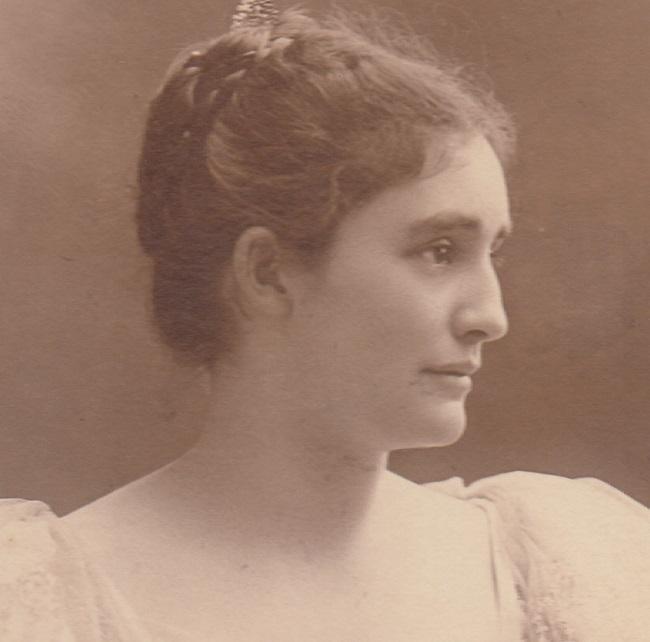Born in Akron, Ohio, on July 6, 1865, Mina Miller Edison was the daughter of inventor and industrialist Lewis Miller and homemaker Mary Valinda Alexander. As the seventh of eleven children, Mina was exposed to the Chautauqua Association through her father, a founder and leader of the organization. Her education at Akron High School and Mrs. Johnson’s Finishing Seminary in Boston prepared her for the life of the wife of a famous man.
Mina met Thomas Edison at the home of inventor Ezra Gilliland in 1885, and the two married on February 24, 1886. She became a stepmother to Thomas’s three children from his previous marriage and went on to have three more children with him. Mina managed the family’s Glenmont estate, and her involvement in various organizations and her philanthropic work made her an influential figure.
Mina played a significant role in the social and civic affairs of West Orange, New Jersey, and Fort Myers, Florida, where the Edison family lived. She was a member of numerous organizations, including the Chautauqua Association, National Audubon Society, John Burroughs Association, Daughters of the American Revolution, and the Playground Association of America. Mina was also an advocate for the education of “colored” children in Lee County. She started the Thomas Alva Edison Foundation in memory of her husband after his death.
Mina’s upbringing, education, and exposure to famous and influential people through her father’s involvement in the Chautauqua Association prepared her for the societal role she played as the wife of Thomas Edison. As a loving wife and business confidant, Mina managed the family’s social calendar, dinner parties, and public relations, allowing Thomas Edison to focus on his passion for inventing breakthrough technologies and industries. Despite her husband’s fame and busy schedule, which often led to long hours at the lab or job sites, Mina persisted in protecting Edison’s privacy and maintaining order in his social life. She also served as a valuable asset to his business, acting as his de facto public relations department.
The Edison family home, Glenmont, was a 23-room mansion on a 13-acre estate in West Orange, New Jersey, near Edison’s laboratories. The estate included a barn, greenhouse, garage, farm animals, and carefully tended grounds. Mina was responsible for managing the estate, entertaining distinguished guests such as Presidents Hoover and Wilson, the kings of Sweden and Siam, environmentalist John Burroughs, educator Maria Montessori, and industrialists like Henry Ford, Harvey Firestone, and George Eastman. In the face of fame and notoriety, Mina skillfully balanced her roles as a mother, estate manager, and active participant in her community.
Mina became an influential force in the conservation movement, which was gaining momentum at the time. She was likely inspired by John Burroughs and others who shared her concern for the rapid growth of cities and the encroachment on pristine areas. Through her efforts, Mina contributed to the preservation of wild areas and the establishment of the national park system.
A passionate bird watcher and horticulturalist, Mina transformed the grounds of Glenmont into a botanical wonderland, planting trees, shrubs, and plant species from around the world. The estate remains vibrant with the smells and aromas of blooming plants and serves as a testament to her dedication to nature and the environment. Mina’s love of birds led her to join and support various bird clubs and societies. She was also instrumental in establishing bird sanctuaries and promoting bird conservation initiatives throughout the United States.
In addition to her environmental work, Mina was deeply involved in her local community. She was a tireless advocate for education, serving on the boards of several schools and working to improve the quality of education for all children. She was particularly interested in promoting vocational training and special education programs for children with disabilities. Mina’s philanthropic efforts extended to various charitable organizations, including the Red Cross, YMCA, and YWCA.
Mina also used her influence to advocate for women’s rights. She believed that women should be able to vote and have access to the same educational opportunities as men. In support of these causes, Mina joined several women’s suffrage organizations and hosted events to promote the movement. Her influence and connections with prominent figures helped to raise awareness for women’s issues and advance the cause of gender equality.
After Thomas Edison’s death in 1931, Mina continued to preserve his legacy and promote his inventions. She played a pivotal role in the establishment of the Thomas Alva Edison Foundation, which aimed to encourage research and development in the fields of science and technology. Mina remained active in the foundation’s activities and continued her work on various philanthropic and environmental projects until her own passing in 1947.
Miller Edison was a remarkable woman who contributed significantly to her community, environmental conservation, and the advancement of women’s rights. As the wife of Thomas Edison, she played an essential role in supporting his groundbreaking work while forging her own path as a philanthropist, activist, and passionate environmentalist. Her enduring impact on society and her commitment to improving the lives of others are a testament to her strength, intelligence, and compassion. Mina’s legacy serves as an inspiration for future generations to continue her work in fostering social change, advocating for the environment, and promoting equality.
References:










